Blog
Valentine’s Day Flowers That Aren’t Roses

While roses are the most obvious choice for Valentine’s Day, you don’t have to limit yourself to them! There are plenty of flowers that make great gifts on February 14, each carrying its own symbolism of love and devotion to make your partner feel special. So if roses aren’t your thing, or you just want to branch out this Valentine’s Day, here are the flowers you could add to your list:
-
Pansies – (Northern Hemisphere)
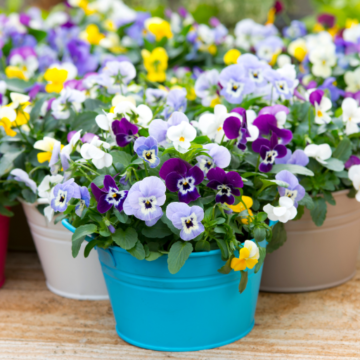
According to the Victorian Language of Flowers, pansies carry the message, “you occupy my thoughts”. Whilst pansies are not commercial cut flowers used by florists in designs, they are a gorgeous potted gift. In Winter Pansies come in a wide range of colours and patterns, including, purple, blue, pink, black, yellow, white, lavender, orange, and some lovely variegated tones, so you can choose a plant that is specifically tailored to the recipient’s taste. Depending on what your partner prefers, the smaller, more delicate size of pansies and longevity may be preferable to a large bouquet of roses, and their delicate, sweet fragrance of some varieties appeals to many. My favourite feature is their happy faces!
-
Tulips – (North & South)

Tulips are a symbol of love and are often associated with new beginnings and fresh starts, making them a perfect gift for a special occasion like Valentine’s Day. The Victorian Language of Flowers says that they literally mean, “I declare my love for you”. Tulips come in a wide range of colours, including red, pink, white, yellow, and purple, allowing you to choose a bouquet that reflects your personal style and the preferences of your loved one.
Tulips are typically a bit less expensive than roses, making them a more budget-friendly option for those looking to save money on Valentine’s Day gifts. Depending on where and how they are kept, Tulips can have a longer lifespan than some rose varieties, meaning they will last longer as a reminder of your love and affection. For those of you in the Southern Hemisphere keep in mind Tulips are not in Season as they are a winter spring bloom, however they are available imported, often having a shorter case life and higher price tag!
-
Myrtle – (North & South)
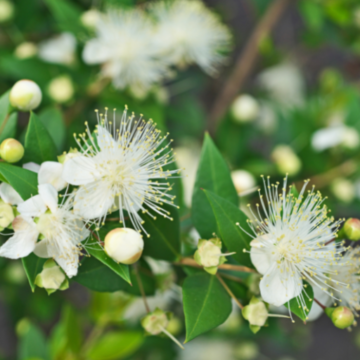
Myrtle is a symbol of love and fertility, making it a perfect gift for Valentine’s Day. In ancient times, myrtle was often used in wedding ceremonies and was believed to bring good luck to newlyweds. Myrtle has a longer shelf life than roses, making it a more practical gift. While roses may only last a few days, myrtle can last for several weeks when properly cared for. Myrtle is a unique and unexpected gift, which can make it more meaningful and special than traditional roses. When it’s not flowering the foliage of Myrtle can be used to base bouquets ready to add various blooms.
There are many different varieties of Myrtle, some from South America, Africa, Australia, New Zealand and Eastern Europe. A big plus is also that myrtle can be a more sustainable and eco-friendly option, as it is often grown locally and does not require as much water and pesticides as roses. This can make it a more ethical choice for those looking to reduce their carbon footprint. My personal preferred option is to add some native myrtle to a bouquet of roses!
-
Ivy – (North & South)
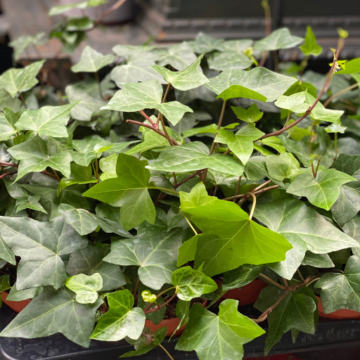
While not technically a flower, ivy represents eternal love, fidelity, and attachment, which are all values that are associated with Valentine’s Day, especially for those in long-term relationships. Roses, on the other hand, are more commonly associated with romantic love and passion. Ivy can be given as a potted plant (great for balconies and courtyards) or can be added to floristry bouquets and arrangements. My favourite is ‘Ivy Berry ‘when added to bouquets.
Ivy, like most foliages has a longer lifespan than roses, making it a more practical choice as a gift that is meant to last. If purchased as a living plant in a pot, Ivy can live for many years if cared for properly, while roses have a shorter lifespan and will eventually wilt and die. For those who are sensitive to pollen, roses can trigger allergy symptoms, whereas ivy is almost allergy-friendly* and unlikely to cause reactions, *some varieties may affect some people..
-
Dahlias – (Southern Hemisphere)
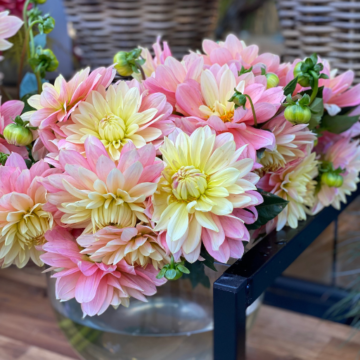
While roses are a traditional and popular choice for Valentine’s Day, dahlias are a less common flower yet hugely popular late summer flowers that may be seen as more unique. Representing eternal love and commitment, you can choose from a wide variety of colours to create a bouquet for your loved one.
Depending on the variety, dahlias can last longer than some rose varieties once they are cut, which means they will stay fresh and beautiful for a longer period of time. For those concerned about the high cost of roses around February 14th, dahlias may be a slightly more cost-effective option, depending on the location and availability.
-
Cornflowers – (Northern Hemisphere)
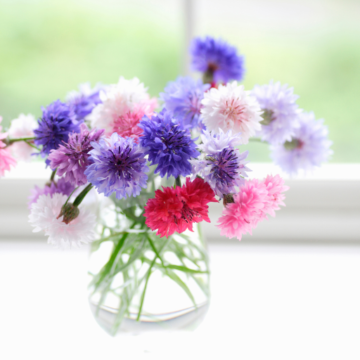
While roses are often associated with love and romance, cornflowers have a different symbolism. They represent hope and resilience, which for some, can be a more meaningful message to convey on Valentine’s Day, especially if you or your partner have or are facing a challenging period of time. Cornflowers flower in Spring and are also hypoallergenic, so they make a safe option for those with allergies or sensitivity to pollen.
Cornflowers are another good budget-friendly option for those worried about cost. They tend to be cheaper than roses, especially around Valentine’s Day.
The simple truth is that a rose is not the only option in 2023. Think outside the box and explore flowers beyond the traditional rose bouquet. Consider having a variety of ‘meadow’ flowers including garden roses. Think about what your significant other likes, make it personal, look for a flower with a particular meaning, or find an arrangement that communicates your feelings more effectively than just the traditional dozen red roses. Consider potted flowering plants too..

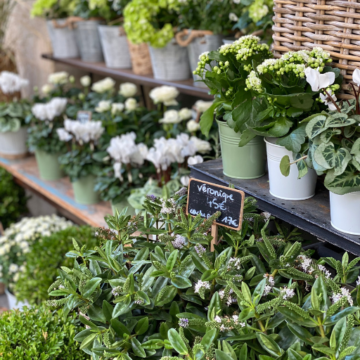
Want to know more about the language of flowers? Read our blog on Floriography to discover which flowers symbolise eternal friendship and gratitude, and which convey anger and resentment. You don’t want to get those mixed up!